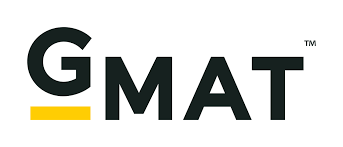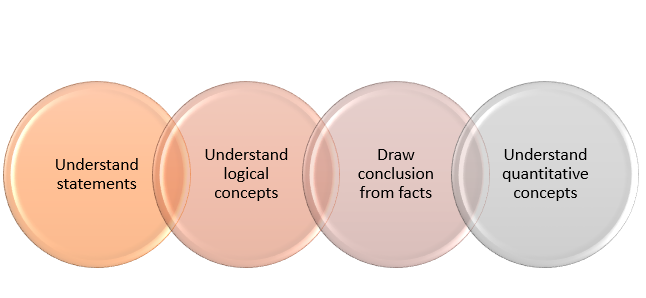GMAT prep tips: Verbal section
The verbal section of the GMAT exam measures the test taker’s ability to read and comprehend the written material, reason and evaluate arguments, and correct written material to express ideas effectively in standard written English. The GMAT Verbal section is difficult to crack. Very few test-takers get a perfect score of 51. In this article, we will give you tips and strategies to handle the GMAT Verbal questions accurately.
Time: 65 minutes
Format: 36 questions
Tests: Reading Comprehension, Critical Reasoning, Sentence Correction
Skills Measured
-
Understanding statements
-
Understanding the logical concepts in the reading passages
-
Drawing conclusion from facts and statements
-
Understanding the development of quantitative concepts as they are presented in verbal material
You May also like:
- IELTS Registration (How to Book a Test)
- IELTS Exam Dates FAQ
- How to Choose IELTS Test Dates
- How to Send IELTS Scores to Colleges
Reading Comprehension Questions
Reading Comprehension passages are up to 350 words long. Because the Reading Comprehension section includes passages from several different content areas, the student may be generally familiar with some of the material.
Critical Reasoning Questions
Critical Reasoning questions are designed to test the reasoning skills involved in making arguments, evaluating arguments, and formulating or evaluating a plan of action.
Sentence Correction Questions
Sentence Correction questions ask you which of the five choices best expresses an idea or relationship. The questions will require you to be familiar with the stylistic and grammatical rules of standard English.
GMAT Verbal Section Tips
Below provided the tips for GMAT Verbal Section. These tricks will help you in GMAT Verbal preparation.
Tips for Reading Comprehension
There are 3 common types of topics for comprehension passages. The way you go about answering the question will be slightly different for each.
-
Passages dealing with the sciences, such as biology and chemistry are factual and straightforward.
-
Passages dealing with the social sciences, such as history and geography will present many conclusive questions, so you have to read them slowly.
-
Passages dealing with business-related areas are tough, as they have difficult structures, and may even ask you to determine the author’s mood and opinions
-
When answering a factual question, keep in mind that they are the most straightforward kind of question.
-
When you are asked to describe the tone of the passage, the tone is more likely to be positive or neutral than negative. In a science passage, it is likely to be neutral.
-
As you read, focus on the main theme, the author’s tone, and paragraph topics rather than the specific details of the passage.
-
Read the first question before you read the passage. You will have a better idea of what to focus on.
-
When answering a fact question, carefully read both the passage providing the data – and several lines before it.
Tips for Critical Reasoning
-
Read the question first so you know what kind of question you have to answer before you read the argument.
-
For ‘strengthen’ or ‘weaken-the-argument’ questions, determine what type of reasoning the author uses and choose an answer that either helps or hurts that way of reasoning.
-
For questions that ask you to draw conclusions, choose an answer that contains the basic idea of the author.
-
The answer must be a logical extension of the argument in the passage. Never choose an answer simply because you feel it is true.
-
Try to guess the correct answer before you read the answer choices. This will help you focus on the best answer.
-
Read all the answer choices. Eliminate the ones you know are wrong, and analyze the remaining ones with a focus on identifying the one that presents the most correct answer.
Tips for Sentence Correction
The correct answer will have these 4 characteristics:
-
No grammar errors
-
Correct sentence structure
-
No diction errors
-
No changes to the sentence’s intended meaning
-
Look out for multiple errors. A common mistake is to find one error in the sentence, without noticing that there are other errors in the sentence.
-
Compare the answer choices. Seeing how the choices differ from one another is a good way to find out what errors might be in the underlined text.
-
Say the choices in your head and see whether they sound right.
Related Posts:
- Busting Myths About Studying Abroad
- TOEFL Exam 2022
- 25 Scholarships in USA
- Top 10 Scholarships in Italy for International Students
- Top 10 Prestigious Scholarships for the Best Students
- 35+ International Scholarships for Development-Related Studies
- 15+ Tuition Fee Scholarships offered by Universities for International Students
- 10 Distance Learning Scholarships & Tuition
- Top 10 International Scholarships for Women
- 10+ Scholarships in Australia for International Students
- Top 50 International Scholarship Programs Offered Annually
- Top 10 Science, Engineering, Technology Scholarships for Foreign Students
- Top 15 Bachelor’s Degree Scholarships for International Students
- Top 10 International Scholarships for African Students
- PTE Academic 2022
- GRE Exam 2022
- GMAT 2022 Exam



